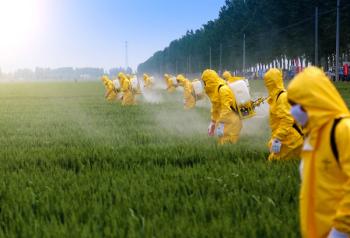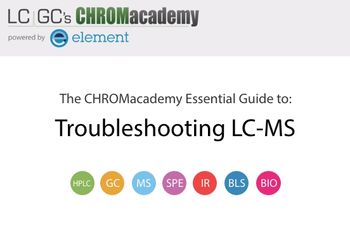
In the first of a two-part series, a recent study discusses a new strategy for assessing the peak purity of pharmaceutical peptides analysis using 2D-LC–MS.


Rapid and Sensitive Determination of Residues of Triphenylmethane Dyes and Their Metabolites in Animal Tissues by LC–MS/MS

In the first of a two-part series, a recent study discusses a new strategy for assessing the peak purity of pharmaceutical peptides analysis using 2D-LC–MS.

Glyphosate and AMPA are two potentially dangerous chemicals within herbicides. Using LC–MS to detect these chemicals is important to human and environmental health.

Using LC–MS, scientists have developed a new method for testing doping steroids in blood.

Using an Analytical Quality by Design approach, scientists recently identified impurities in a pharmaceutical product for hypertension treatment.

Using liquid chromatography-tandem mass spectrometry, scientists have found a similarity between the protective functions of the oral permeability barrier and the skin barrier.

While pesticides may be beneficial, they may also cause health risks in foods. In a recent study, scientists created new methods for detecting maximum pesticide residue levels.

Dipeptide profiles have an important role in detecting disease, and a recent study has made it much more accessible to study them.

By performing tissue analysis of caracals in captivity and in their natural African habitats, scientists were able to quantify uptake of toxic chemicals from the environment depending on how polluted they are.

A recent study was conducted using liquid chromatography–tandem mass spectrometry (LC–MS/MS) to identify the effect of cooking and storage on poly)phenolic compounds in piquillo peppers.

Webinar Date/Time: Wed, May 3, 2023 11:00 AM EDT

Webinar Date/Time: Wednesday, April 26th, 2023 at 11am EDT | 8am PDT | 4pm BST | 5pm CEST

Webinar Date/Time: Tuesday, June 6th, 2023 at 11am EDT | 8am PDT | 4pm BST | 5pm CEST

Webinar Date/Time: Wednesday, April 19, 2023

Webinar Date/Time: Thu, Apr 20, 2023 11:00 AM EDT

Webinar Date/Time: Airing 1: Tuesday, February 28th, 2023 at 9am EST | 6am PST | 2pm GMT | 3pm CET Airing 2: Tuesday, February 28th, 2023 at 2pm EST | 11am PST | 7pm GMT | 8pm CET

Webinar Date/Time: Thursday, March 16th, 2023 at 8am PST | 11am EST | 4pm GMT | 5pm CET

Webinar Date/Time: Tuesday, January 31st, 2023 Session 1: 9am EST | 2pm GMT | 3pm CET Session 2: 2pm EST | 11am PST | 7pm GMT

Webinar Date/Time: Tuesday, February 21st, 2023 Morning session: 9:30 am EST - 12:15 pm EST Afternoon session: 2:00 pm EST - 4:00 pm EST Wednesday, February 22nd, 2023 Morning session: 9:30 am EST - 12:15 pm EST Afternoon session: 2:00 pm EST - 4:00 pm EST

Webinar Date/Time: Thu, Feb 23, 2023 11:00 AM EST

Webinar Date/Time: Wednesday, Feb 15th and Thursday, Feb 16th, 2023 Day 1: 9:00 am EST – 2:45 pm EST Day 2: 8:30 am EST – 4:30 pm EST

Webinar Date/Time: Thursday, February 16th, 2023 at 8am PST | 11am EST | 4pm GMT | 5 pm CET

Webinar Date/Time: Monday, March 27th at 11am EDT|8am PDT|4pm BST|5pm CEST

In this extended special feature to celebrate the 35th anniversary edition of LCGC Europe, key opinion leaders from the separation science community explore contemporary trends in separation science and identify possible future developments.

The methodologies demonstrated here open the way to fully compliant at-line monitoring of monoclonal antibody quality attributes.

Webinar Date/Time: Tue, Dec 13, 2022 11:00 AM EST